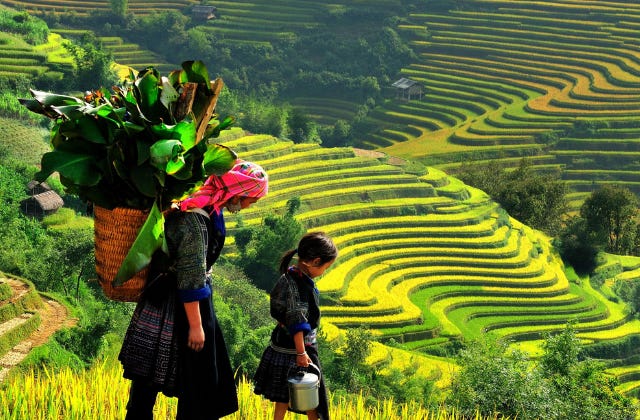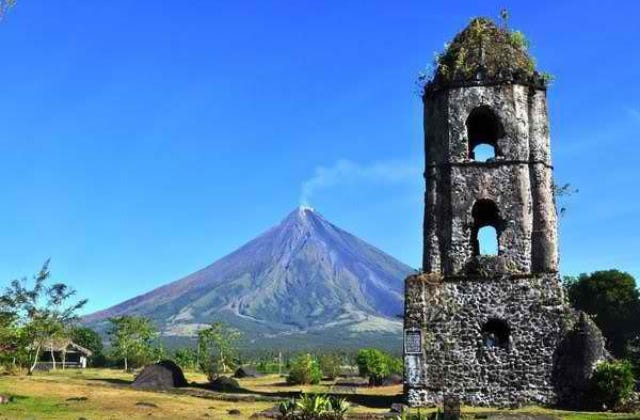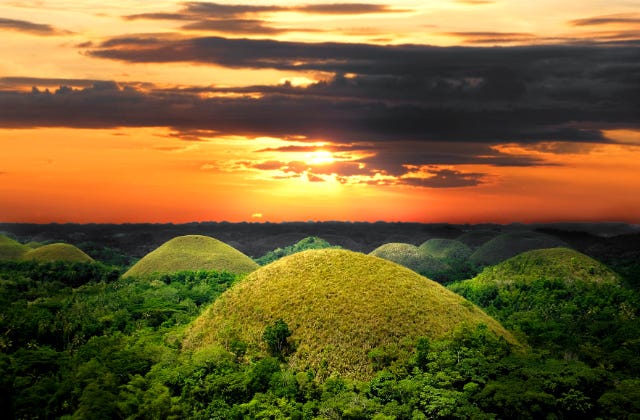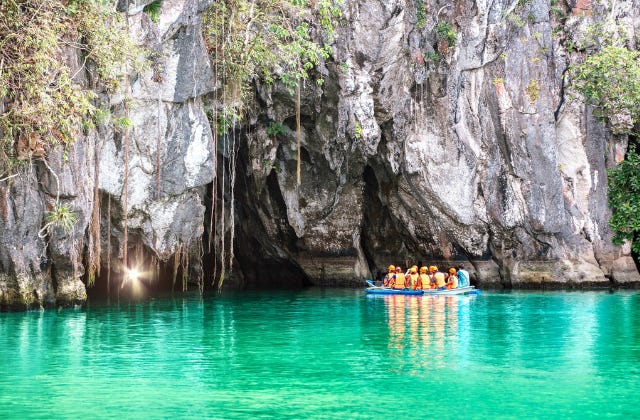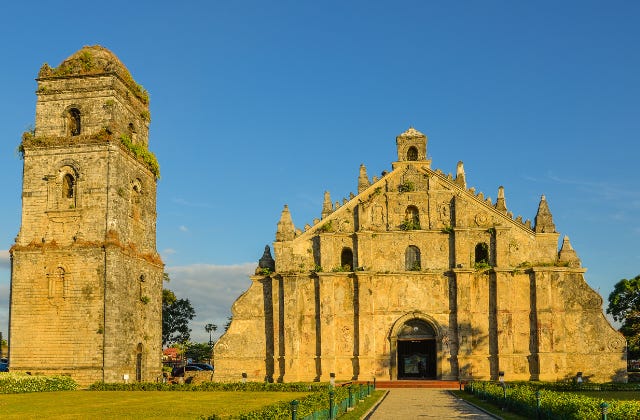Unveiling the Philippines: Top 14 Must-Visit Cultural Landmarks and Heritage Sites
Dive into the rich history and timeless beauty of the Philippines.
The rice terraces create a visually stunning landscape like no other
The Philippines, with all its pristine white sand beaches, is a natural destination for beach and nature lovers. However, let’s not forget that this archipelago is bursting with history and culture, too. If you're looking to add some heritage and history to your island-hopping adventure, this list is for you!
Get ready for a whirlwind journey through 14 must-visit cultural landmarks and heritage sites that will give you a deeper understanding of the Philippines, beyond the sand and surf.
1. Banaue Rice Terraces (Ifugao)
Often called the "Eighth Wonder of the World," the Banaue Rice Terraces were hand-carved into the mountains by the Ifugao people over 2,000 years ago. Yes, you heard that right. No machinery - just extraordinary skills passed down through generations.
If you happen to find yourself standing and surrounded by these ancient terraces, you will find it easy to see why the Ifugao people consider them sacred. If you’re up for it, you can hike around and get up close to these marvels while chatting with locals about their culture and traditions. And bring your camera - your photos here are going to be epic.
2. Mayon Volcano (Albay)
Talk about perfect symmetry! Mayon Volcano in Albay is famous for its near-perfect conical shape, making it one of the most beautiful volcanoes in the world. But don’t let its beauty fool you - Mayon is an active volcano, and its frequent eruptions have shaped the landscape and lives of those around it for centuries.
While Mayon’s scenic beauty is enough to make anyone stop and stare, it’s also tied deeply to local myths and legends. According to folklore, the volcano is named after the beautiful Daragang Magayon (the Beautiful Maiden), whose tragic love story is said to be the reason behind the mountain’s majestic shape. Whether you’re here to hike, snap photos, or simply take in the views, Mayon will leave you in awe.
Growing up in Naga City, just a 2.5-hour drive to Mayon, I had the privilege of seeing the majestic volcano from where I lived. On clear days, its perfect cone shape was a familiar sight, almost like a daily companion - except, of course, when the clouds decided to hide it from view. It's one of those stunning images of home that will always stay with me.
The Mayon Volcano and the Cagsawa ruins
3. Cagsawa Ruins (Albay)
Just a short distance from Mayon Volcano lies the Cagsawa Ruins, a haunting yet beautiful reminder of the volcano’s power. The ruins are what’s left of the Cagsawa Church, which was destroyed during Mayon’s deadly eruption in 1814. Today, only the church’s bell tower remains, standing tall against the backdrop of Mayon Volcano - creating one of the most iconic and photogenic spots in the country.
Walking through the ruins, you can’t help but imagine the people who sought shelter in the church, only to be overtaken by the lava flow. While it’s a somber place, it’s also a symbol of the resilience of the local community. Plus, the surrounding park is a popular spot for tourists to picnic, take pictures, and enjoy a stunning view of Mayon in all its glory.
4. Chocolate Hills (Bohol)
The Chocolate Hills of Bohol are one of the Philippines' most unique and awe-inspiring natural wonders. These are over 1,200 beautifully rounded hills scattered across the landscape. These lush green mounds transform into a chocolate-like hue as the grass dries up, hence the name “Chocolate Hill”. They create a breathtaking sight that looks like something out of a fairytale
Local legend says these hills were formed from the tears of a heartbroken giant. Whether you believe the myths or not, visiting the Chocolate Hills is a must when you’re in Bohol. They’re a geological mystery and a symbol of the natural beauty that makes Bohol so special. It’s perfect for nature lovers and adventure seekers alike!
These beautiful hills may look like giant Hersey’s Kisses to some
5. Intramuros (Manila)
Intramuros, aka “The Walled City,” is basically where the Spanish colonial era in the Philippines comes to life. Here you can see cobblestone streets, old Spanish fortifications, and horse-drawn carriages clattering by. Built in the late 1500s, this place is the OG Manila.
You can explore the grand Fort Santiago, wander around San Agustin Church (a UNESCO World Heritage site), or just take a guided tour to hear all the juicy historical tidbits. It’s a bit like stepping into a time machine, only with more Instagram-worthy spots.
And if you’re into ghosts and spirits, they say Intramuros has its fair share of those too. With its centuries-old buildings and stories of war and tragedy, some locals claim it’s one of the most haunted spots in Manila. If you’re feeling adventurous, a night tour might just give you a few chills to go along with the history!
6. Vigan City (Ilocos Sur)
The entire city of Vigan in Ilocus Sur, is a UNESCO World Heritage Site, and for good reason! The well-preserved Spanish colonial architecture makes you feel like you’ve just strolled onto the set of a historical drama.
Walking down Calle Crisologo, with its cobblestone streets and Spanish-era houses, is an absolute must. And don’t miss the local kalesa (horse-drawn carriage) ride for that full-on throwback experience. Vigan is also a foodie haven, so while you’re at it, munch on some empanada and longganisa (local sausages).
7. Taal Heritage Town (Batangas)
Just a couple of hours from Manila, the Taal Heritage Town is a hidden gem for history buffs. This charming town is home to some of the best-preserved colonial architecture in the country, with stately homes that give off major vintage vibes.
You’ll also find the massive Taal Basilica, the largest Catholic church in Asia! Don’t forget to stop by the old Escuela Pia and the Marcela Agoncillo Museum, where the first Philippine flag was sewn. It's a small town with a huge historical punch!
A volcano within a lake, within an island
And here’s a bonus: the town is also near Taal Volcano, a fascinating natural wonder and a massive caldera. Taal Volcano sits on an island within Taal Lake, creating a “volcano within a lake within a volcano.” It’s one of the world’s smallest active volcanoes but also one of the most beautiful, with a stunning lake-filled crater. A visit to Taal wouldn’t be complete without experiencing both its rich history and the breathtaking view of this geological marvel!
8. Mount Samat National Shrine (Bataan)
If you’re feeling a bit more adventurous, you should head up Mount Samat in Bataan and visit the Dambana ng Kagitingan (Shrine of Valor). This giant cross stands as a memorial to the soldiers who fought and died during World War II, particularly during the infamous Bataan Death March.
The views from the top are stunning, but the history behind this site is even more profound. It’s a sobering but important stop to honor the bravery and sacrifices made by Filipinos and Americans during the war.
9. Corregidor Island (Cavite)
If you're a history buff with a thing for military sites, you’ll love Corregidor Island. This island fortress played a key role during World War II and is packed with bunkers, barracks, and cannons left over from battles long past.
You can take a day trip from Manila to explore the war memorials, tunnel systems, and the iconic Pacific War Memorial. The island’s natural beauty is an added perk, with gorgeous views of the surrounding waters.
10. Sagada (Mountain Province)
If you’re up for a mix of adventure, culture, and a little bit of mystery, then Sagada is the place for you. This mountain town is famous for its cool climate and breathtaking views, but it’s also known for its unique burial traditions. Check out the famous Hanging Coffins - yes, coffins literally suspended from cliffs - an ancient practice by the local Igorot people.
While you're there, make sure to trek through the beautiful mountain trails, visit the underground caves, and take in the views of the Echo Valley. And don’t miss out on a visit to Sumaguing Cave, the largest cave in Sagada, known for its stunning rock formations and thrilling spelunking experience. It’s a place that blends adventure and culture in the best way possible!
11. Puerto Princesa Subterranean River National Park (Palawan)
Also known as the Underground River, this natural wonder in Palawan is a UNESCO World Heritage site that’ll leave you speechless. Sure, it’s known for its jaw-dropping beauty, but it’s also culturally significant for the local Tagbanua people, who have long considered the caves sacred.
Take a boat tour through the underground river and learn about its historical and ecological importance. Plus, you’ll glide through stunning limestone caves, which are cool in more ways than one!
Adventure awaits inside the underground river
12. Magellan’s Cross (Cebu City)
Have you ever wondered where Ferdinand Magellan, the Portuguese explorer, first landed in the Philippines? The answer lies in Cebu City, where Magellan’s Cross marks the spot of his arrival in 1521. This simple yet symbolic structure is located inside a small chapel next to the historic Basilica del Santo Niño.
The cross is a reminder of the moment Christianity was introduced to the Philippines, shaping much of the country’s culture and history thereafter. It’s an easy stop if you’re exploring Cebu City, but a significant one!
13. Baroque Churches of the Philippines (Multiple Locations)
The Philippines is home to some seriously beautiful churches, but did you know that four of them are recognized as UNESCO World Heritage Sites? These Baroque Churches are spread out in various locations: Manila with the grand San Agustin Church, Ilocos Sur with the captivating Santa Maria Church, Ilocos Norte with the picturesque Paoay Church and Iloilo with the “Fortress Baroque” Miagao Church .
These places of worship are true architectural marvels, with their unique blend of European Baroque style and local craftsmanship. They’re cultural landmarks that have withstood the test of time. Even if you’re not religious, the artistry and history behind these buildings are enough to make you say “wow.”
Ilocos Norte’s Paoay Church with its distinctive Baroque design
14. Tubbataha Reefs Natural Park (Sulu Sea)
Last but definitely not least, we’ve got Tubbataha Reefs, a UNESCO World Heritage site located in the middle of the Sulu Sea. This marine sanctuary isn’t just a diver’s paradise - it’s a place with deep cultural significance, especially for local fishermen who rely on the sea for their livelihood.
This natural wonder has been protected for decades, and visiting it supports conservation efforts. Plus, it’s home to some of the most diverse marine life on the planet, making it one of the best dive spots in the world. Even if you're not a diver, just knowing about the conservation and community efforts here is worth the trip!
Conclusion
These 14 amazing cultural landmarks and heritage sites in the Philippines should definitely be on your travel radar. From ancient terraces to grand cathedrals, these places tell the story of a country rich in history, culture, and tradition. So next time you’re planning a trip to the Philippines, make sure you sprinkle a little heritage into your itinerary.
So, what are you waiting for? Start planning your trip, brush up on some Filipino history, and get ready to immerse yourself in all the fascinating culture and heritage that the Philippines has to offer. These spots are as photogenic as they are fascinating.
Happy travels and happy exploring!





